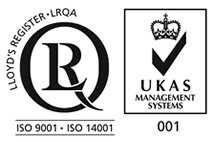
Main Products
Copyright 1998-2025 Firmetal Group All Rights Reserved. | Sitemap
Extremely thin titanium alloy foils are mainly applied in the field of battery energy, such as hydrogen fuel cells and lithium-ion batteries.
Hydrogen fuel cell bipolar plate: The bipolar plate is a key component of proton exchange membrane fuel cells. Extremely thin titanium alloy foils can be used to manufacture bipolar plates. The density of titanium is approximately 4.5 grams per cubic centimeter, which is about 50% lighter than stainless steel. Using titanium bipolar plates can reduce the weight of the battery stack, enhance the energy storage endurance, and provide stronger shock resistance and greater stability in vehicle use.
Lithium-ion battery current collector: Extremely thin titanium alloy foil can be used as the current collector for lithium-ion batteries. It has excellent electrical conductivity and corrosion resistance, effectively collecting and transmitting the current inside the battery, while resisting the corrosion of the electrolyte, thereby enhancing the battery's cycle life and safety. In addition, the lightweight property of titanium alloy foil also helps to reduce the overall weight of the battery and increase its energy density.
Battery catalytic reaction carrier: The extremely thin titanium alloy foil has a high specific surface area and can be used as a catalyst carrier for battery-related catalytic reactions, such as in the oxygen reduction reaction of fuel cells or the electrode reaction of lithium-ion batteries, to promote the progress of electrochemical reactions and improve the performance and efficiency of batteries.
Electrolytic water hydrogen production plates: In proton exchange membrane (PEM) electrolytic water hydrogen production equipment, extremely thin titanium alloy foils can be used to manufacture stamped titanium plates.